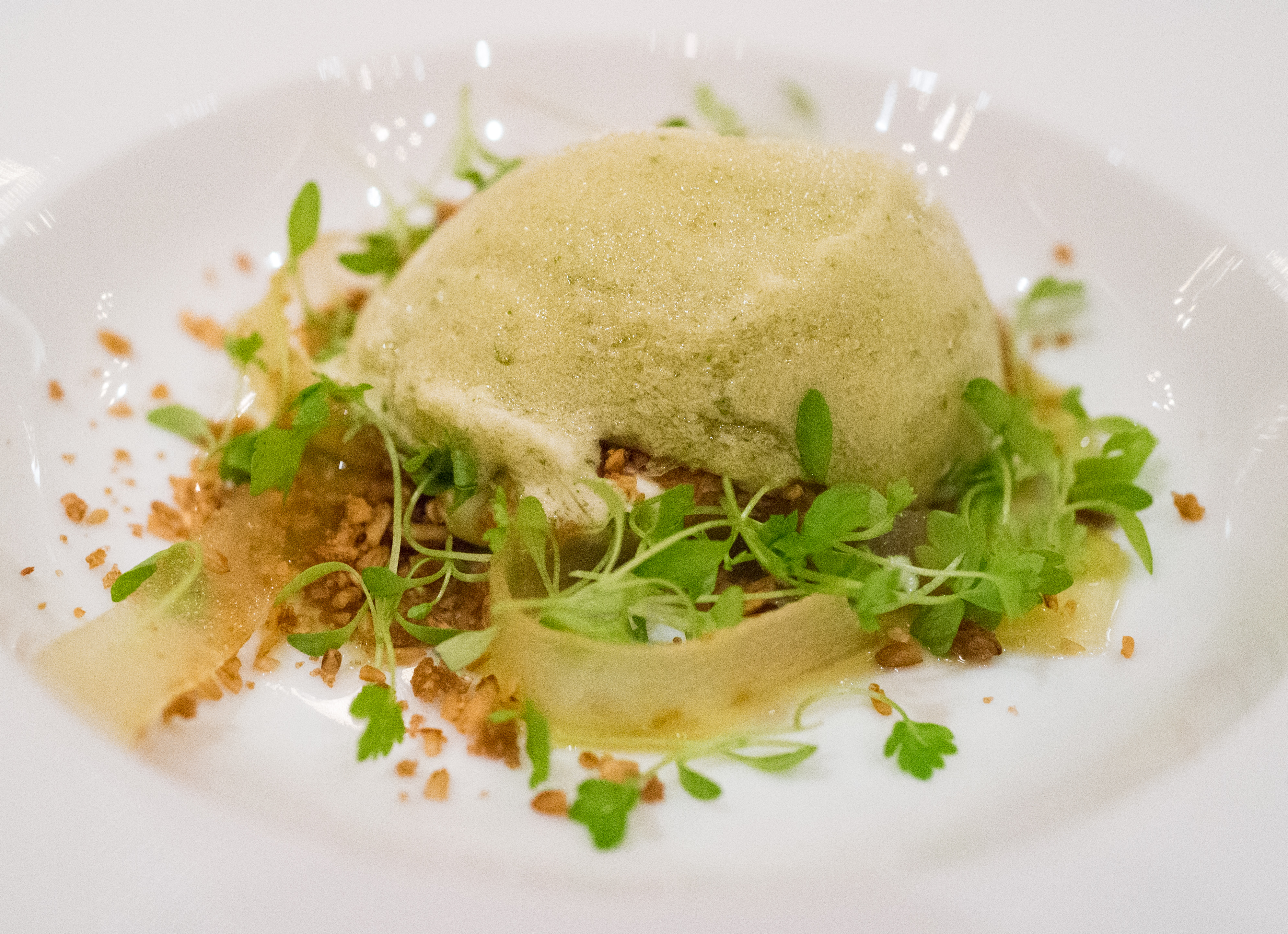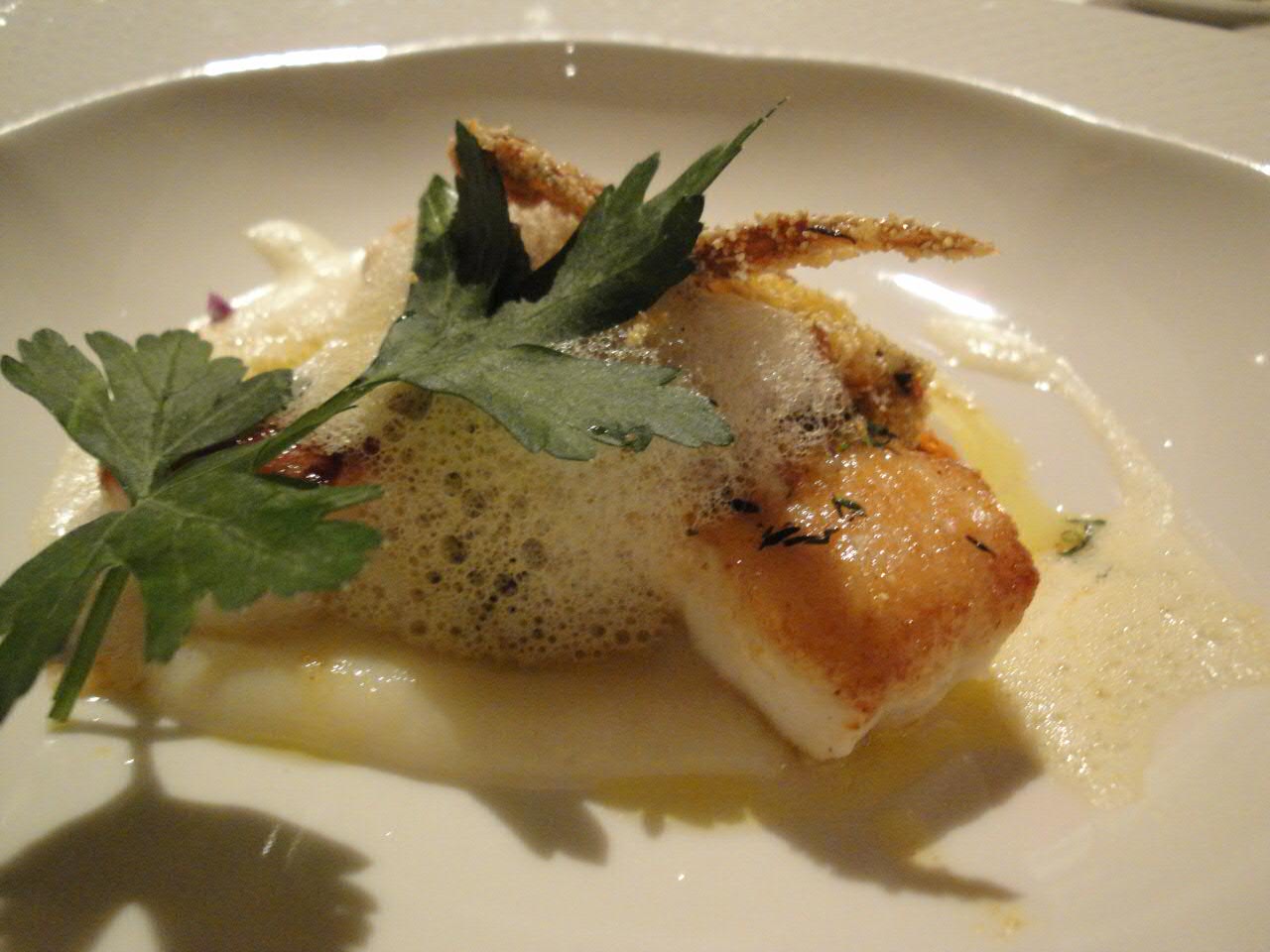Foam (culinary) on:
[Wikipedia]
[Google]
[Amazon]
 In cuisine, foam is a gelling or stabilizing agent in which air is suspended. Foams have been present in many forms over the history of cooking, such as
In cuisine, foam is a gelling or stabilizing agent in which air is suspended. Foams have been present in many forms over the history of cooking, such as
 To form a stable foam and
To form a stable foam and
 In cuisine, foam is a gelling or stabilizing agent in which air is suspended. Foams have been present in many forms over the history of cooking, such as
In cuisine, foam is a gelling or stabilizing agent in which air is suspended. Foams have been present in many forms over the history of cooking, such as whipped cream
Whipped cream is liquid heavy cream that is whipped by a whisk or mixer until it is light and fluffy and holds its shape, or by the expansion of dissolved gas, forming a firm colloid. It is often sweetened, typically with white sugar, and ...
, meringue
Meringue (, ; ) is a type of dessert or candy, often associated with Swiss, French, Polish and Italian cuisines, traditionally made from whipped egg whites and sugar, and occasionally an acidic ingredient such as lemon, vinegar, or cream of ...
and mousse
A mousse (; ; "foam") is a soft prepared food that incorporates air bubbles to give it a light and airy texture. Depending on preparation techniques, it can range from light and fluffy to creamy and thick. A mousse may be sweet or savory. as e ...
. In these cases, the incorporation of air or another gas creates a lighter texture and a different mouthfeel
Mouthfeel refers to the physical sensations in the mouth caused by food or drink, making it distinct from taste. It is a fundamental sensory attribute which, along with taste and smell, determines the overall flavor of a food item. Mouthfeel is ...
. Foams add flavor without significant substance, and thus allow cooks to integrate new flavors without changing the physical composition of a dish.
More recently, foams have become a part of molecular gastronomy
Molecular gastronomy is the scientific approach of nutrition from primarily the perspective of chemistry. The composition (molecular structure), properties (mass, viscosity, etc) and transformations (chemical reactions, reactant products) of an ...
technique. In these cases, natural flavors (such as fruit juices, infusions of aromatic herbs, etc.) are mixed with a neutrally-flavored gelling or stabilizing agent such as agar
Agar ( or ), or agar-agar, is a jelly-like substance consisting of polysaccharides obtained from the cell walls of some species of red algae, primarily from ogonori (''Gracilaria'') and "tengusa" (''Gelidiaceae''). As found in nature, agar is ...
or lecithin
Lecithin (, from the Greek ''lekithos'' "yolk") is a generic term to designate any group of yellow-brownish fatty substances occurring in animal and plant tissues which are amphiphilic – they attract both water and fatty substances (and so ar ...
, and either whipped with a hand-held immersion blender or extruded through a whipped cream canister equipped with nitrous oxide
Nitrous oxide (dinitrogen oxide or dinitrogen monoxide), commonly known as laughing gas, nitrous, or nos, is a chemical compound, an oxide of nitrogen with the formula . At room temperature, it is a colourless non-flammable gas, and has a ...
cartridges. Some famous food-foams are foamed espresso, foamed mushroom, foamed beet and foamed coconut. An espuma or thermo whip
Thermo may refer to:
* Adobe Thermo, a designers' tool for creating the user interface for Rich Internet Application by Adobe Systems
* Heat, energy transferred from one system to another by thermal interaction
* Thermo Fisher Scientific, a healt ...
is commonly used to make these foams through the making of a stock, creating a gel and extruding through the nitrous oxide canister.
Creating culinary foam
 To form a stable foam and
To form a stable foam and emulsion
An emulsion is a mixture of two or more liquids that are normally immiscible (unmixable or unblendable) owing to liquid-liquid phase separation. Emulsions are part of a more general class of two-phase systems of matter called colloids. Althoug ...
, a surfactant
Surfactants are chemical compounds that decrease the surface tension between two liquids, between a gas and a liquid, or interfacial tension between a liquid and a solid. Surfactants may act as detergents, wetting agents, emulsifiers, foaming ...
, such as lecithin
Lecithin (, from the Greek ''lekithos'' "yolk") is a generic term to designate any group of yellow-brownish fatty substances occurring in animal and plant tissues which are amphiphilic – they attract both water and fatty substances (and so ar ...
, monoglyceride
Monoglycerides (also: acylglycerols or monoacylglycerols) are a class of glycerides which are composed of a molecule of glycerol linked to a fatty acid via an ester bond. As glycerol contains both primary and secondary alcohol groups two differen ...
s or protein
Proteins are large biomolecules and macromolecules that comprise one or more long chains of amino acid residues. Proteins perform a vast array of functions within organisms, including catalysing metabolic reactions, DNA replication, respo ...
s, must be present to reduce the interfacial tension
Surface tension is the tendency of liquid surfaces at rest to shrink into the minimum surface area possible. Surface tension is what allows objects with a higher density than water such as razor blades and insects (e.g. water striders) to ...
between the air-oil phase and the aqueous phase. If the surfactants are at equal concentrations at the interface, proteins are generally less effective than small surfactants, such as lecithin or monoglycerides, at decreasing the interfacial tension. Of course, this is not true of heated soybean or whey protein, which readily forms copious foam.
Foams consist of two phases, an aqueous phase and a gaseous (air) phase. Foams have been used in many forms in the history of cooking, for example: whipped cream
Whipped cream is liquid heavy cream that is whipped by a whisk or mixer until it is light and fluffy and holds its shape, or by the expansion of dissolved gas, forming a firm colloid. It is often sweetened, typically with white sugar, and ...
, ice cream
Ice cream is a sweetened frozen food typically eaten as a snack or dessert. It may be made from milk or cream and is flavoured with a sweetener, either sugar or an alternative, and a spice, such as cocoa or vanilla, or with fruit such as str ...
, cake
Cake is a flour confection made from flour, sugar, and other ingredients, and is usually baked. In their oldest forms, cakes were modifications of bread, but cakes now cover a wide range of preparations that can be simple or elaborate, ...
s, meringue
Meringue (, ; ) is a type of dessert or candy, often associated with Swiss, French, Polish and Italian cuisines, traditionally made from whipped egg whites and sugar, and occasionally an acidic ingredient such as lemon, vinegar, or cream of ...
, soufflé
A soufflé is a baked egg-based dish originating in France in the early eighteenth century. Combined with various other ingredients, it can be served as a savory main dish or sweetened as a dessert. The word soufflé is the past participle of t ...
s, mousse
A mousse (; ; "foam") is a soft prepared food that incorporates air bubbles to give it a light and airy texture. Depending on preparation techniques, it can range from light and fluffy to creamy and thick. A mousse may be sweet or savory. as e ...
and marshmallow
Marshmallow (, ) is a type of confectionery that is typically made from sugar, water and gelatin whipped to a solid-but-soft consistency. It is used as a filling in baking or normally molded into shapes and coated with corn starch. The sugar c ...
. It has a unique light texture because of the tiny air bubbles and/or a different mouthfeel
Mouthfeel refers to the physical sensations in the mouth caused by food or drink, making it distinct from taste. It is a fundamental sensory attribute which, along with taste and smell, determines the overall flavor of a food item. Mouthfeel is ...
. In most of these products, proteins are the main surface active agents that help in the formation and stabilization of the dispersed gas phase. To create a protein-stabilized foam, it usually involves bubbling, whipping or shaking a protein solution and its foaming properties refers to its capacity to form a thin tenacious film at the gas-liquid interface for large amounts of gas bubbles to become incorporated and stabilized.
When protein concentrations are increased to their maximum value the foaming powers and foam formation are generally increased. Often to compare foaming properties of various proteins, the foaming power at a specific protein concentration is determined.
A protein will always have certain stresses that it must overcome, such as gravitational and mechanical; it is the protein's ability to stabilize foam against these stresses that determines the foam's stability. The foam's stability is usually expressed as the time required for 50% of the liquid to drain from foam (a 50% reduction in foam volume).
References
{{reflist Cooking techniques Molecular gastronomy Culinary terminology